“The global EV traction motor market is on track to reach $29 billion by 2026”
according to consultancy firm Shibuya Data Count.
Overview
The global growth of electric vehicles (EVs) is driving many changes in automotive design, not the least of which is the need for more robust and flexible approaches to interconnect electric motors in the powertrain and other systems such as steering and motion control mechanisms.
As shown below, among the key elements are power electronics controllers and inverters, DC/DC converters, and traction motors. Also, other motors, such as e-power steering servo motors, need to be interfaced to power electronics.
With continuing advances in energy sources, power electronics and motors, the critical bottleneck in the overall system has now shifted to the interconnections between these key subsystems.
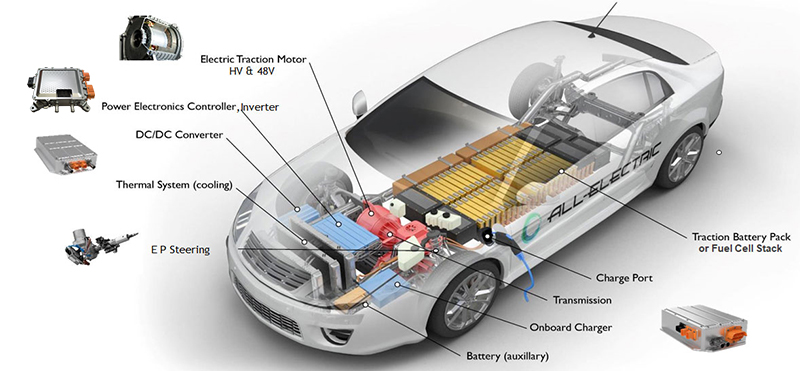
This Tech Bulletin provides an overview of how new advanced busbar technologies for motor stators are now enabling designers to quickly optimize their designs for current flow, form factors, thermal performance, faster assembly, and overall lower cost of deployment.
Evolution of Traction Motor Market Requirements
As mentioned above, the overarching driver for new motors and power interfaces is coming from the electrification of vehicles. While this encompasses related areas such as public transportation, railways and other applications, the lion’s share of development and volume deployment is coming from consumer markets for EVs.
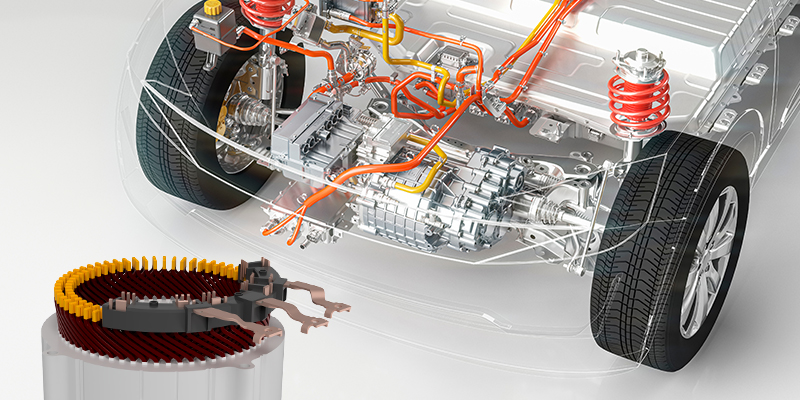
Given the globally competitive environment and accelerating demand for consumer-focused EVs, there has been a proliferation of different motor configurations and requirements. Among the various applications are:
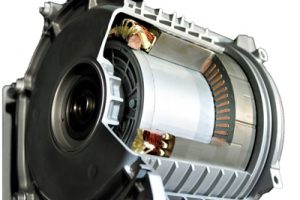
- Large primary traction drive single-motor applications with hairpin windings (most common application)
- In-wheel motors with axial flux designs (e.g., for individual wheels)
- Smaller servo motors(such as e-power steering, auto-adjust suspension, etc.)
Currently, the market is focused on large primary traction motors with evolutionary trends moving toward multiple drive motors and integrated drivetrains, often called eAxle, with a power inverter, and gearbox combined. In addition, many other motion control functions in the EV, such as power steering utilize servo control motors with fully integrated filters and power conversation technologies.
Design Goals
The overall design goals for new-generation custom-formed busbars:
- Simplify assembly as compared to conventional wire-wound stators.
- Improve current flow between power inverters and motor stators.
- Achieve higher current output and density while maintaining high reliability.
- Minimize resistance and reduce heat generation while improving cooling.
- Build-in robust thermal characteristics and Coefficient of Thermal Expansion (CTE) mismatch resilience.
- Reduce size and weight while providing flexibility for various mounting options.
- Extend lifecycle performance within harsh automotive environments.
- Lower the overall cost of manufacturing and lifecycle service.
Key Features to Look for in New Busbars for Traction Motor Stators
To achieve the above goals, designers need to look for partners that can provide busbars with these key features:
- Multi-phase interfaces
- Both low-voltage and high-voltage current capabilities (up to 800v)
- Range of sizes (typically from 30mm to 250mm in diameter)
- Molded and over-molded and assembled construction options
- High-temperature materials
- Design to accommodate hairpin windings
- Optimize for isolation and dielectric strength
- Good heat dissipation characteristics
- Ability to align termination points for custom motor requirements
- Ability to manage end-to-end resistance budget from power inverter through a motor
ENNOVI Motor Stator Busbars
As an experienced leader in busbars and other interconnects, ENNOVI has a long track record of pioneering innovation, which once again is being leveraged to provide highly configurable and robust custom busbar technologies for traction motor stators.
As shown below, these busbars are designed to accommodate hairpin windings typically used in advanced higher voltage motor stators and to provide a range of flexible multi-phase connections. They can handle a full range of high-voltage current requirements and use high-performance copper integrated with specially selected polymer materials for optimal dielectric isolation and improved thermal characteristics.
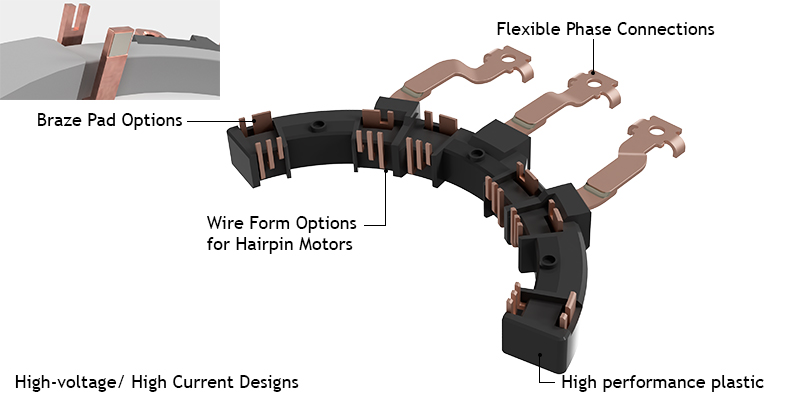
Interconnect methods comprise both pluggable interfaces and various bonding options, including:
- Brazing – good for small motors
- Pluggable – good for servo motors and easier testing
- Laser welding or bolt-on – optimized for high voltages
Also, the ENNOVI solutions incorporate flexible multi-phase connectors because motor and inverter connectors do not always align perfectly and flexibility is helpful for final mounting and easier alignment for connection.
Other options include multi-phase stator bars to handle 3-phase or 6-phase application requirements.
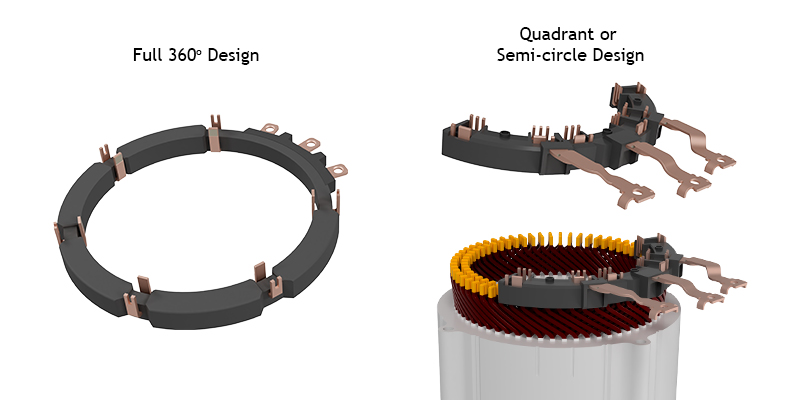
One of the most important aspects is designing the busbars for required thermal performance and robust electrical performance at high temperatures. Because of the heat generated by the motors, traction drives are often cooled by oil. The combination of these factors means that proper materials selection and physical design are critical factors for success.
The ENNOVI Busbar Design Group has deep experience in materials science to determine the best options, along with applications-specific design expertise, FEA analysis, thermal management and design for manufacturing processes.
With oil-cooled drive motors typically operating in the 120-150°C range along with rapid heat rises of 30°C, the use of most plastics quickly becomes problematic. The ENNOVI team has found good results with high-temp, glass-filled plastic molding solutions that can deliver the best combination of thermal characteristics, electrical performance, chemical resistance and material strength needed for success. (More information on materials is available from ENNOVI.)
